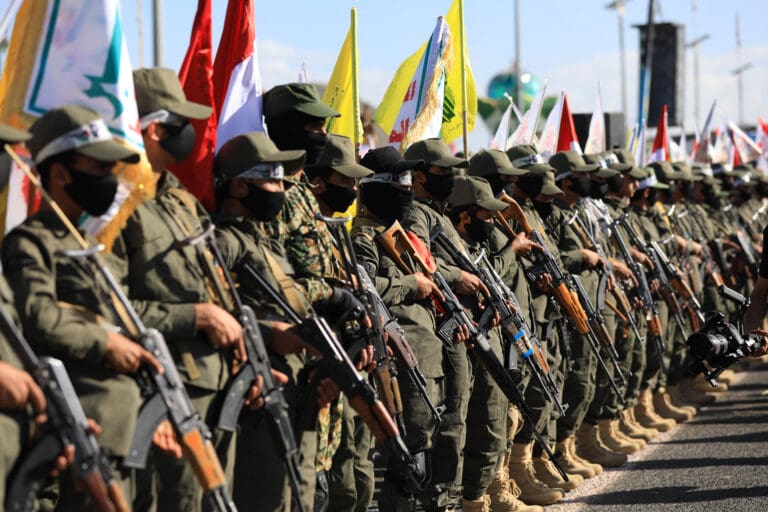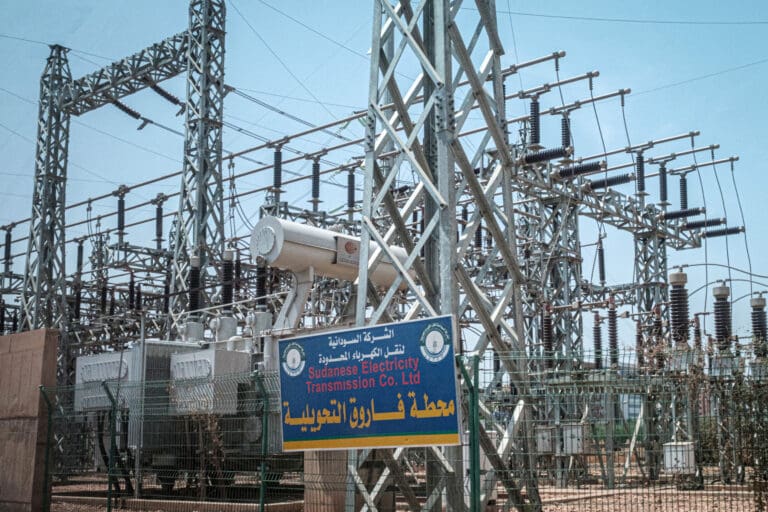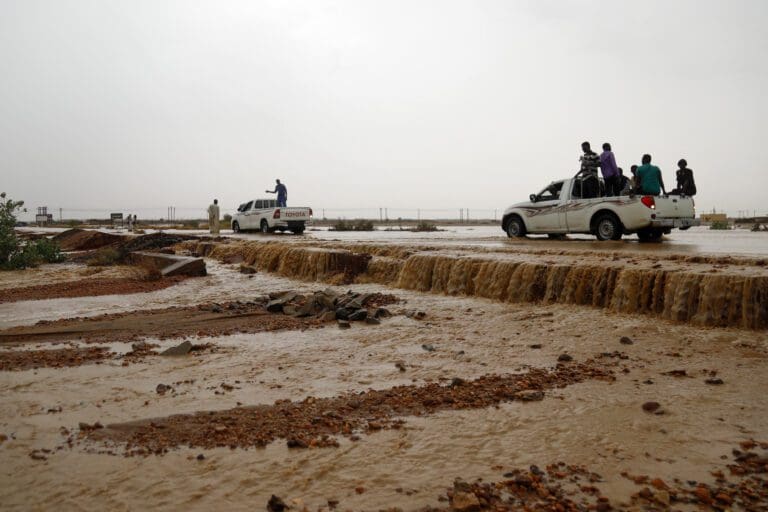
Localizing Renewable Energy Supply Chains in the Gulf:
Ambitions, Challenges, and Strategic Pathways
Issue Brief, May 2025
Key Takeaways
The Gulf is navigating between ambitious goals and structural challenges: Despite their abundant oil and gas resources, Gulf Arab states are inching towards an energy transition. But their renewable energy localization efforts face significant barriers, including technological and workforce gaps, limited domestic markets, and intense competition from China.
Divergent national strategies, common objectives: The Gulf nations are pursuing various paths to localize their renewable energy supply chains and enhance their energy security, with local content mandates, free zones and investment incentives, local facilities, and market-driven flexibility.
Securing critical minerals and midstream capabilities is paramount: Securing critical minerals and expanding midstream manufacturing is essential for building a resilient domestic renewable energy sector. As China dominates rare earth refining and key inputs, Gulf states should boost renewable energy R&D and attract investment to develop domestic production.
Coordination is vital to integrate fragmented markets and achieve economies of scale. A unified GCC strategy could pool demand, streamline investments, and foster cross-border collaboration. Sustained R&D, technology transfer, and strategic use of sovereign wealth funds are all crucial to building a competitive, integrated renewable energy supply chain in the Gulf.
Introduction
Despite their abundant oil and gas wealth, the member states of the Gulf Cooperation Council (GCC) are cautiously navigating the energy transition. Growing international pressure for decarbonization, falling solar and wind technology costs, and the economic imperative to diversify beyond oil have led them to explore renewable energy supply chains to diversify their economies and enhance their energy security.1
Having mainly relied until now on imported renewable energy products and technology, the GCC states—Bahrain, Kuwait, Oman, Qatar, Saudi Arabia, and the United Arab Emirates (UAE)—are moving to establish domestic manufacturing and supply chains for solar and wind technologies. Admittedly, given that China controls over 80% of the global solar market and over 60% of wind component production,2 the Gulf states remain highly dependent on imports. The UAE has sourced around 99% of its solar modules from China over the last few years, while Oman relied on Chinese imports for nearly 80% of its photovoltaic (PV) panels.3 However, on a national level, Gulf countries are tempering this dependence through targeted policies such as Saudi Arabia’s local content mandates, Oman’s free zone incentives, the UAE’s open-market strategy, and Qatar’s efforts to build a facility producing polysilicon, a key raw material used in solar cells.4
The region is thus developing a localized value chain and has made significant strides in policy and investment. However, it faces structural challenges in scaling its manufacturing to compete with entrenched global suppliers.
This Issue Brief examines these evolving localization efforts across the Gulf, assessing their potential to transform the region from a net importer to a competitive, independent player in the global renewable energy market. It also explores the challenges, ranging from technological and workforce gaps to the limits on domestic market capacities, and geopolitical uncertainties.
Renewables Ambitions and the Paradox of Transition
The GCC states have historically approached climate change efforts with skepticism, perceiving them as a direct challenge to their economic models.5 This reluctance is rooted in their overwhelming reliance on fossil fuel exports, which account for a substantial share of Gross Domestic Product (GDP), government revenues, and national employment. The hydrocarbon sector not only fuels their domestic economies but also dominates global energy markets, making a sudden pivot toward renewables highly unlikely. Moreover, GCC countries have largely framed their climate strategies around reducing carbon emissions, hydrogen production, and making improvements in energy efficiency, rather than developing local renewables industries.
While the International Energy Agency forecasts oil demand to peak this decade,6 the Organization of Petroleum Exporting Countries (OPEC), led mainly by the Gulf states, argues that no peak is imminent, and that demand will continue rising until at least 2050.7 This aligns with OPEC’s broader strategy of sustaining oil market share while simultaneously expanding low-carbon energy investments. Last year, Saudi Arabia’s energy minister reaffirmed the Kingdom’s commitment to promoting clean energy technologies while ensuring its dominance in oil and petrochemical markets.8 This strategy is echoed by other GCC states, which view fossil fuel revenues as indispensable for improving living standards as well as funding ambitious energy transition and economic diversification efforts.
However, growing climate pressures and the need for economic diversification are forcing the region to reassess its strategies, balancing its continued dependence on fossil fuels for domestic energy generation against ambitious renewable energy targets. The threats of rising sea levels, extreme temperatures, and chronic water scarcity have heightened awareness of climate-related vulnerabilities.9 A shift in rhetoric and policy across the GCC has followed, driven by economic and geopolitical factors, particularly the need to optimize fossil fuel exports while aligning with global energy transitions. This shift reflects a more proactive stance on climate adaptation and mitigation, with many projects implemented and many more planned.10 Various estimates indicate that the GCC could add over 85 GW of renewables capacity by the mid-2030s.11
While Saudi Arabia and the UAE are frontrunners in the Gulf’s renewable energy transition, all GCC member states have established renewable energy goals, emissions reduction pledges, and net-zero targets (see Table 1). Saudi Arabia aims to generate half of its electricity from renewable sources by 2030, with parts of the supply chain localized to boost domestic manufacturing.12 The UAE is aiming for a 44% clean energy share in its total mix by 2050, including 6% nuclear, to meet growing power demand and curb emissions.13 Other Gulf states have also set ambitious targets: Oman for instance, seeks to derive 10% of its power from renewables by 2025 and 20% by 2030.14 Qatar has committed to 30% renewables in its energy mix by 2030,15 and Bahrain recently increased its target to 20% by 2030;16 while Kuwait aims for 15% by 2030.17
Table 1: Renewable Energy Targets in The GCC
| Country | Emissions Reduction Target | Renewable Energy Target | Total Renewable Energy (2023) |
| Qatar | 25% by 2030 wrt BAU2019* | 2-4 GW by 2030 | 824 MW;7.2% |
| Bahrain | 30% by 2035 wrt BAU2015 | 20% of energy mix by 2030 | 59 MW; 0.6% |
| Oman | 7% by 2030 wrt BAU2019 | 20% of electricity by 2030 | 722 MW; 6.2% |
| Kuwait | 7.4% by 2035 wrt BAU2015 | 15% of power by 2030 | 114 MW; 0.6% |
| UAE | 19% by 2030 wrt 2019 | Triple share of RE by 2030; 44% of capacity by 2050 | 6000 MW;13.8% |
| Saudi Arabia | 278 MtCO2eq/yr wrt 2019 | 50% of electricity by 2030 | 2988 MW; 3.3% |
*wrt = with respect to. BAU = business as usual.
Source: Data on emissions reduction & renewable energy targets were obtained from IRENA’s Renewable Energy Markets: GCC 2023. Data on installed capacity was obtained from IRENA’s Renewable energy statistics 2023.
Despite these ambitious targets, a sizable gap remains between them and actual renewable energy capacity to date. Renewables adoption remains slow, and continued Gulf investment in oil-to-chemicals infrastructure, natural gas projects, and enhanced oil recovery may dilute the development of a competitive renewable energy supply chain. This could cost the Gulf economies substantial technology transfer and associated multiplier effects, instead reinforcing fossil fuel dependence and limiting the financial, policy and industrial capacity needed to scale up domestic renewables manufacturing. By not developing local production — from raw material extraction to advanced component manufacturing — the region forfeits opportunities to build high-value industries that could drive job creation and economic diversification. Without a local supply chain, the technology and know-how required for advanced manufacturing will remain confined to external partners.18
The transition to renewable energy in the GCC faces significant challenges, primarily due to the region’s long-standing dependence on hydrocarbons.19 The region’s economic model has historically prioritized fossil fuel industries, limiting incentives for the rapid expansion of renewable energy markets. Fossil fuel subsidies and low electricity tariffs further complicate the transition,20 artificially lowering the cost of hydrocarbons, making renewable alternatives less attractive in domestic markets. While some reforms have been introduced, energy price distortions persist, hindering the competitiveness of the solar and wind energy markets.
Governance structures pose another barrier.21 The energy sector in the GCC is primarily led by state-owned enterprises, which appear to have limited incentives to prioritize renewable energy development.22 Furthermore, decision-making tends to be centralized and energy policy is highly influenced by the hydrocarbon sector, which focuses on achieving short- and medium-term financial objectives. This approach can sometimes overshadow the prioritization of long-term sustainability goals, potentially limiting efforts to address broader environmental and social considerations.23 Moreover, the extractive and transport industries—both heavily reliant on hydrocarbons—are resistant to adopting sustainable practices, creating institutional inertia that slows the transition. Experts argue that governance reforms are necessary to accelerate the shift to renewables,24 including greater private sector participation, improved regulatory frameworks, and a clearer delineation of responsibilities between different national energy agencies and utilities.25
The Gulf’s Transition and China’s Dominance
Several Gulf states are seeking to localize renewable energy component production, aiming to build resilient supply chains and reduce reliance on a single source. These efforts face hurdles due to the GCC’s late start and the dominance of existing global solar and wind suppliers, particularly China. Beijing dominates the global renewables sector, including mining, refining and processing of raw materials. It refines over 80% of the world’s rare earth elements, essential for wind turbine magnets and battery storage. By 2021, China produced 79% of global polysilicon, 97% of wafers, and 85% of solar cells, along with more than 80% of solar equipment and 60% of wind components, supported by a vertically integrated industrial policy, extensive financing, and strategic control over raw materials.26
For Gulf states to manufacture finished products, they should invest in forward-looking ventures to minimize reliance on massive external supply chains. This poses a paradox: close ties with China provide cost-effective, high-quality technology, enabling record-low solar tariffs—yet ongoing imports hinder progress towards localization. The key challenge is for the Gulf to transition from being a passive buyer to an active player in the renewables supply chain.
As global demand grows for renewable products such as batteries and other downstream products, and as the United States accelerates efforts to reduce Chinese influence in its supply chains, this cooperative dynamic may increasingly tend toward competition. On the one hand, Western efforts to decouple from Chinese technology may create opportunities for the Gulf to attract diversified investment and technology transfer, positioning the region as a strategic hub for renewable energy components manufacturing. On the other, rising geopolitical tensions could potentially disrupt Chinese capital and technology flows, which might increase costs and destabilize supply chains, challenging Gulf markets. Ultimately, success will depend on the region’s ability to leverage its strategic location, invest in its workforce and technology development, and implement coordinated policies.
Renewable Energy Localization: Divergent Policies
The Gulf states’ efforts to develop their domestic renewable energy supply chains are driven by the dual imperatives of economic diversification and energy security. Qatar is committed to maintaining its momentum in the renewables sector as part of its Vision 2030 masterplan, with the aim of producing solar technologies locally and adding value to the industry. Although Qatar was set to lead the region with the first polysilicon production facility in the Gulf and Middle East,27 operated by Qatar Solar Technologies (QSTec) and designed for an annual capacity of 8,000 metric tonnes of high-grade polysilicon; however, the project has yet to realize its full operational potential.28 In 2024, Qatar invested in a Dublin-based mining investment vehicle, TechMet, aimed at developing its existing assets and expanding its portfolio in critical minerals such as lithium, nickel, cobalt, and rare earths.29
Oman has pursued an investment-driven approach, leveraging free zones and fiscal incentives to attract renewable energy manufacturers. In 2017, a $94 million solar module assembly plant was set up at the Duqm Special Economic Zone to produce photovoltaic panels, with an annual capacity of about 1,000 megawatts (MW), in collaboration with Ningxia Zhongke Jiaye New Energy and the Oman Investment Fund.30 In 2022, Advanced Industries Inc. (a U.S. firm) launched a solar panel facility with 200 MW of annual capacity, at a cost of $1.35 billion, including a polysilicon plant.31
In 2025, Oman began developing its first wind turbine manufacturing facility in the Duqm, led by Mawarid Turbine Company in partnership with Shanghai Electric Wind Power Group-with commercial operations expected by 2026 and an anticipated annual production capacity of up to 1,000 MW.32 Furthermore, the Minerals Development Oman (MDO) recently signed a concession agreement with the Ministry of Energy and Minerals for an area in the Mahout region offering significant high-purity silica, limestone, and dolomite deposits—vital for wafer and cell production.33 With silica ore reserves exhibiting over 97% purity, the deal positions MDO to become Oman’s first dedicated silica sand miner, reinforcing the nation’s broader strategy to diversify its mineral portfolio and spur industrial growth. The agreement may enhance investment in the solar sector, promote industrial diversification, and strengthen public-private partnerships. If Oman’s silica reserves prove substantial enough to supply Gulf market, the region could develop a more self-sufficient, integrated renewable energy manufacturing network.
By contrast, the UAE has pursued a market-led strategy that emphasizes regulatory flexibility and trade incentives over strict localization mandates. Dubai, in particular, has positioned itself as a regional hub for assembling renewable energy products, attracting Chinese firms to establish solar glass and module assembly plants.34 While this has facilitated rapid deployment and significant foreign investments, it has not fundamentally reduced reliance on Chinese intermediate components—particularly in critical areas such as silicon wafer production, battery storage, and inverter technology.
The UAE is also investing in mining in Africa and Latin America to support the transition and achieve industrial goals.35 In 2023, it signed a $1.9 billion deal with the Democratic Republic of the Congo’s state miner Sakima to develop several mines, securing concessions in tin, tantalum, tungsten, and gold.36 Additionally, International Resources Holdings (IRH) of the UAE secured a 51 percent stake in Zambia’s Mopani Copper Mines for $1.1 billion.37 In 2024, the IRH announced joint venture agreements in Angola, and entered advanced discussions in Burundi, Tanzania, and Kenya to extract a broader range of critical minerals.38 These initiatives reflect the UAE’s strategic intent to build a diversified supply chain of raw materials—a move driven by lessons learned from the COVID disruptions. Yet this strategy introduces geopolitical risks, particularly in regions where resource nationalism is rising. Governments in Burkina Faso, Mali, and the Democratic Republic of the Congo have renegotiated similar contracts and expropriated related assets, primarily targeting Western firms but increasingly scrutinizing Chinese and Gulf investments as well.39 Unless the UAE and other Gulf states navigate these risks carefully, their long-term resource security could be jeopardized, undermining broader renewable energy ambitions.
In Saudi Arabia, the push toward localization has evolved into an industrial strategy that seeks to transform the entire energy supply chain. Energy minister Prince Abdulaziz bin Salman has underscored the Kingdom’s commitment to localizing 75% of its energy sector, not merely through incremental increases in local content requirements,40 but via a fully integrated approach spanning raw materials extraction, advanced manufacturing, and final product assembly. Under the National Renewable Energy Program (NREP), developers are mandated to source 17–18% of components domestically, with strict penalties imposed on those falling below an 11.5% threshold.41
The Kingdom has introduced various incentives to boost trade, foreign investment, and local employment while enhancing technology and capacity, including support for Saudi manufacturers to access export financing.42 Hence, many companies in Saudi Arabia have established a presence in the local supply chain. For instance, a Spanish PV Hardware company and SolarEdge have set up local production of trackers and inverters, while Desert Technologies, which launched the Kingdom’s first solar PV panel factory in 2011 with a 300 MW annual capacity, now exports globally and has expanded into energy storage and EV charging systems.43 Additionally, Alfanar acquired Senvion India in 2021 to boost wind industry localization in Saudi Arabia and tap into the Indian market. In July 2024, the Public Investment Fund (PIF) partnered with Chinese leaders to build 30 GW of integrated ingots and wafers to cells for solar modules and to manufacture and assemble wind turbine components, including blades, with annual output having an estimated generation capacity of 4 GW. 44
In 2023, Saudi Arabia and the U.S. discussed sourcing critical minerals from Africa. Riyadh committed $15 billion to global mining (focused on sourcing raw materials from developing countries) to bolster domestic processing and meet its 2030 goal of producing 500,000 electric vehicles.45 The kingdom views mining as the third pillar of its Vision 2030, aiming to boost the sector from $17 billion annually to $64 billion by 2035, tapping an estimated $2.5 trillion in untapped mineral resources.46 Yet central to this strategy is the development of raw materials for renewable energy—such as silica, lithium, platinum, copper, and bauxite. The kingdom, for instance, possesses about 6 percent of global silica reserves, with a high purity of 99.7 percent, essential for making solar panels.47
Similarly, Saudi efforts—including the Manara Minerals initiative and lithium extraction projects by Saudi Aramco and Ma’aden—highlight Riyadh’s drive to establish locally integrated supply chains for critical resources. 48 As of 2024, Ma’aden is operating 17 local mines and sites.49 Lithium Infinity recently announced it had extracted lithium from Aramco’s oilfield brine samples, and that it plans to start a commercial pilot program for direct extraction soon.50 Such a project, if it succeeds, could be replicated throughout the Gulf’s oil-rich nations. Indeed, Saudi Aramco51 and Ma’aden have already established a joint venture on lithium extraction.52 This further illustrates Saudi’s efforts to develop its mining sector and securing domestic supply chains for critical minerals. In 2024, the Kingdom secured over $9 billion in agreements with India’s Vedanta, China’s Zijin Mining Group, and Canada’s Platinum Group Metals to develop smelters and refineries for copper, zinc, platinum, and palladium.53
In 2023, Vale Base Metals unveiled plans to build mega-hubs in Oman, Saudi Arabia, and the UAE to process iron ore for domestic and global steel markets. 54 Saudi Arabia also has access to a considerable local resource base composed of metals like copper, gold, and zinc.55 Similarly, established capabilities in cables manufacturing, project management, legal services, and construction can support large-scale renewable energy projects. While these industries currently operate in a fragmented manner, they represent critical starting points for developing a comprehensive renewable energy manufacturing ecosystem—providing coordinated policies and strategic investments can bridge the gaps between these sectors and the core renewable energy value chain.
Indeed, the GCC states already have valuable resources that can further support these supply chains. Given access to the necessary technology, most of them could capitalize on their abundant solar irradiation resources and access to raw materials such as silica to produce solar panels locally. Syndicated Analytics, a U.S. consultancy, reported a 6.7% compound annual growth rate from 2022 to 2027 for the GCC silica sand market, projecting it to reach $513.5 million by 2027.56 Furthermore, domestic industries such as aluminum, steel and cement production could supply essential inputs for conventional construction, and might potentially serve renewable energy infrastructure by providing materials for wind turbine towers, solar mounting structures, and module frames. However, these industries have traditionally focused on standard construction, and often lack the specialized expertise and quality control required to produce high-performance renewables components. Thus, a robust renewable supply chain demands not only raw production capacity but also targeted technical know-how and integrated supply chain capabilities that meet the rigorous standards of renewable energy projects.
Ultimately, if these plans are successful, stronger supply chains could be established that rely less on imports. Yet building up capabilities will take time; these divergent strategies illustrate the multifaceted approach of the Gulf states to building supply chains for renewable energy. Saudi Arabia is focusing on leveraging its domestic resource base and integrating its mining sector into a comprehensive industrial transformation. The UAE is pursuing extensive overseas investments to diversify its mineral portfolio and mitigate supply risks. Qatar is pumping investment into global mining ventures and significant domestic facilities for renewable technology production.
While diverse, all these initiatives show a regional enthusiasm for reducing dependence on external suppliers, even as the challenges of technological gaps, workforce limitations, and market scale persist. That said, global trade disruptions, global trade restrictions, and geopolitical risks introduce uncertainty. To succeed, the Gulf states may need to balance local content requirements with competitiveness, invest in technology transfer and workforce development, and collaborate regionally to avoid fragmented, subscale industries that struggle to compete globally.
Table 2: Renewable Energy Localization Efforts in GCC Countries
| Country | Localization Strategy |
| Saudi Arabia | Mandate-driven, aiming for 75% localization in the energy sector by 2030, with strict local content requirements in the National Renewable Energy Program (NREP). |
| Oman | Investment-driven, focusing on special economic zones (SEZs) and tax incentives to attract foreign investment, with a modest 8% local content requirement for state-tendered projects. |
| UAE | Market-driven, leveraging global partnerships and market flexibility, with investments in mining operations across Africa to secure raw materials for solar and battery production. |
| Qatar | Focused on upstream localization with investments in polysilicon production via QSTec, but lacking significant downstream integration. |
| Kuwait | Minimal localization efforts, relying on imports for renewable energy infrastructure. |
| Bahrain | Minimal localization efforts, relying on imports for renewable energy infrastructure. |
Policy Recommendations and Conclusion
The Gulf Arab states’ pursuit of renewable energy localization is ambitious, driven by geopolitical and trade frictions that reveal how fragile global supply chains can be. These challenges reinforce the region’s resolve to reduce reliance on imports and build resilient domestic supply chains. Unlike established oil and gas infrastructure, the renewable energy supply chain in the Gulf remains underdeveloped, particularly in mining, refining critical minerals, processing and manufacturing components, and grid integration and modernization. High initial costs for localized production and a relatively small regional market may make it difficult to achieve economies of scale, and sustain a fully localized renewable energy manufacturing industry, especially without strong export markets.
The path to full localization faces formidable challenges. Technological and workforce gaps remain significant obstacles. High-tech manufacturing processes—such as solar wafer production, battery cell assembly, and advanced inverter technology—require specialized expertise that are in short supply within the Gulf. Competing with China’s decades-long industrial dominance, which is underpinned by high-volume, low-cost production and robust state-backed financing, further complicates efforts to achieve cost-competitive domestic production. Moreover, the Gulf’s relatively small domestic markets make it hard to reach economies of scale essential for sustained competitiveness.
Given these constraints, Gulf policymakers should adopt a coordinated, long-term strategy. A critical first step is to launch a comprehensive, GCC-wide geological survey aimed at identifying and assessing potential critical mineral deposits—including lithium, rare earth elements, nickel, cobalt, and manganese. Establishing a GCC Critical Minerals Research and Development Center would enable the region to develop innovative and cost-effective extraction, refining, and processing technologies tailored to its unique geological and environmental conditions. Such initiatives are crucial not only for securing raw material inputs but also for reducing reliance on external suppliers, amid an uncertain global trade environment.
In parallel, the region should focus on building midstream manufacturing capacities, rather than attempting an immediate, wholesale replication of China’s integrated supply chain. Attracting foreign firms and incentivizing the private sector in areas such as polysilicon processing, solar wafer production, and battery precursor manufacturing is essential, along with robust technology transfer agreements that both attract capital and develop local expertise.
Addressing the workforce challenge is equally critical. The Gulf states need to invest in specialized training programs, academic/industry collaborations, and vocational education initiatives that build a domestic talent pool in fields such as materials science, precision engineering, and advanced manufacturing processes. Without such investments, the region will continue to depend heavily on expatriate labor, thereby limiting the sustainability of its localization efforts.
Furthermore, the fragmented nature of the Gulf market necessitates a unified regional approach. Unlike China, which leveraged its vast internal demand to drive industrial expansion, the Gulf’s relatively small and dispersed markets make it difficult for any single state to achieve the necessary scale. A fragmented approach risks breeding inefficiency, as each country builds parallel industries rather than leveraging economies of scale through cross-border collaboration. A coordinated, GCC-wide industrial strategy—one that harmonizes policies, pools demand and strategically allocates investment across member states—could help overcome these limitations, reducing redundancies and creating the critical mass needed for competitive domestic production.
That said, the Gulf region is well-positioned to navigate the complex geopolitical landscape between the US and China. Chinese firms are essential to the renewable energy market and are more willing to engage in technology transfer than their Western counterparts. The current trade wars and tariff disputes underscore the importance of diversifying partnerships to reduce reliance on a single supplier. The Gulf could seize this opportunity by harnessing its sovereign wealth funds, investing strategically in global mining, refining, and processing assets. This approach would diversify supply and strengthen the region’s resilience against external shocks. By pursuing equity stakes in these critical sectors, the Gulf can effectively meet its resource needs while minimizing the operational challenges of developing and managing mines. This would position the region as vital in the evolving global clean energy marketplace.
Ultimately, the GCC’s aspiration to build an integrated renewable energy supply chain faces technological, financial, and logistic risks and institutional challenges. Without sustained efforts to close these gaps, localization goals may remain unachievable. Yet these endeavors mark the start of a long journey, and successfully navigating it requires strong R&D investment, technology transfer, and regional collaboration. By expanding mineral resource development, midstream manufacturing, workforce training, and policy coordination, the Gulf can shift from importing renewable technologies to joining the global clean energy market. In the coming decades, the real test will be whether these strategies yield transformative industrial autonomy—or perpetuate reliance on international supply chains.




